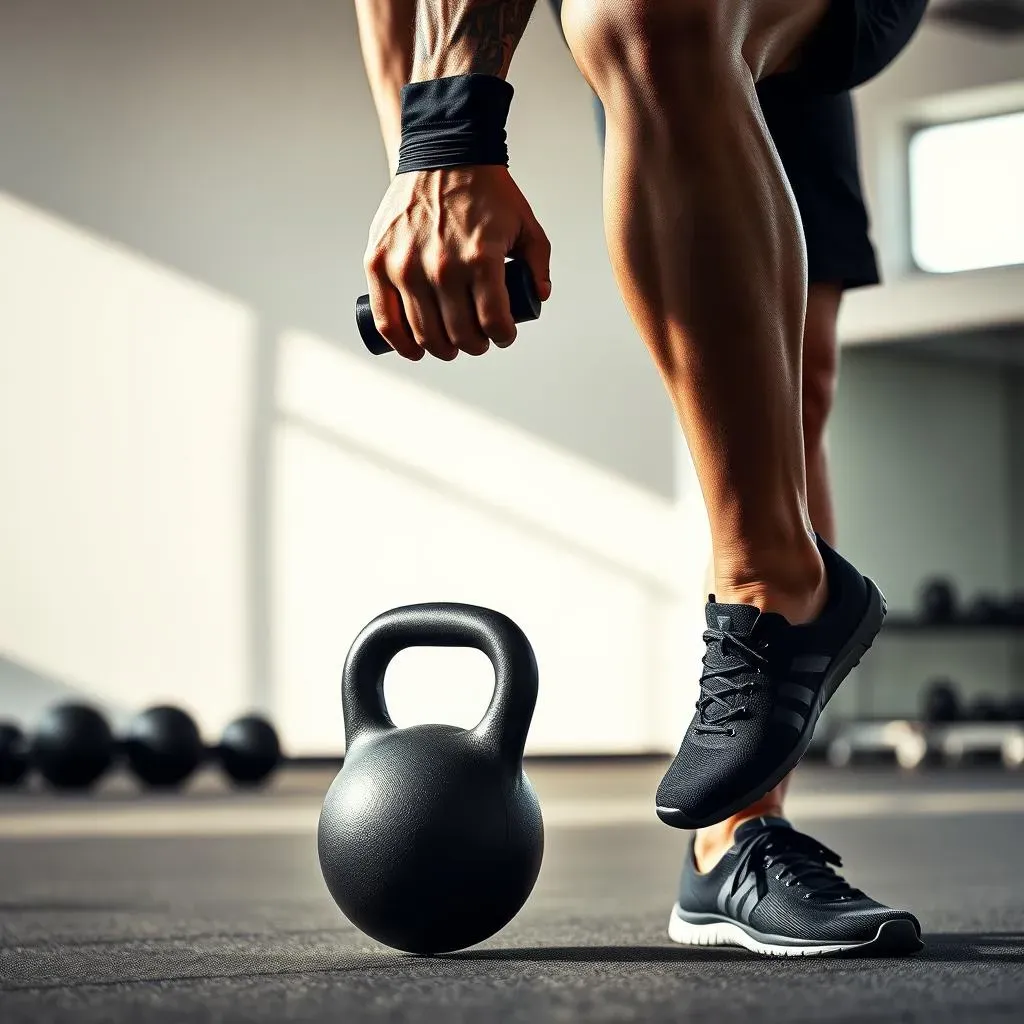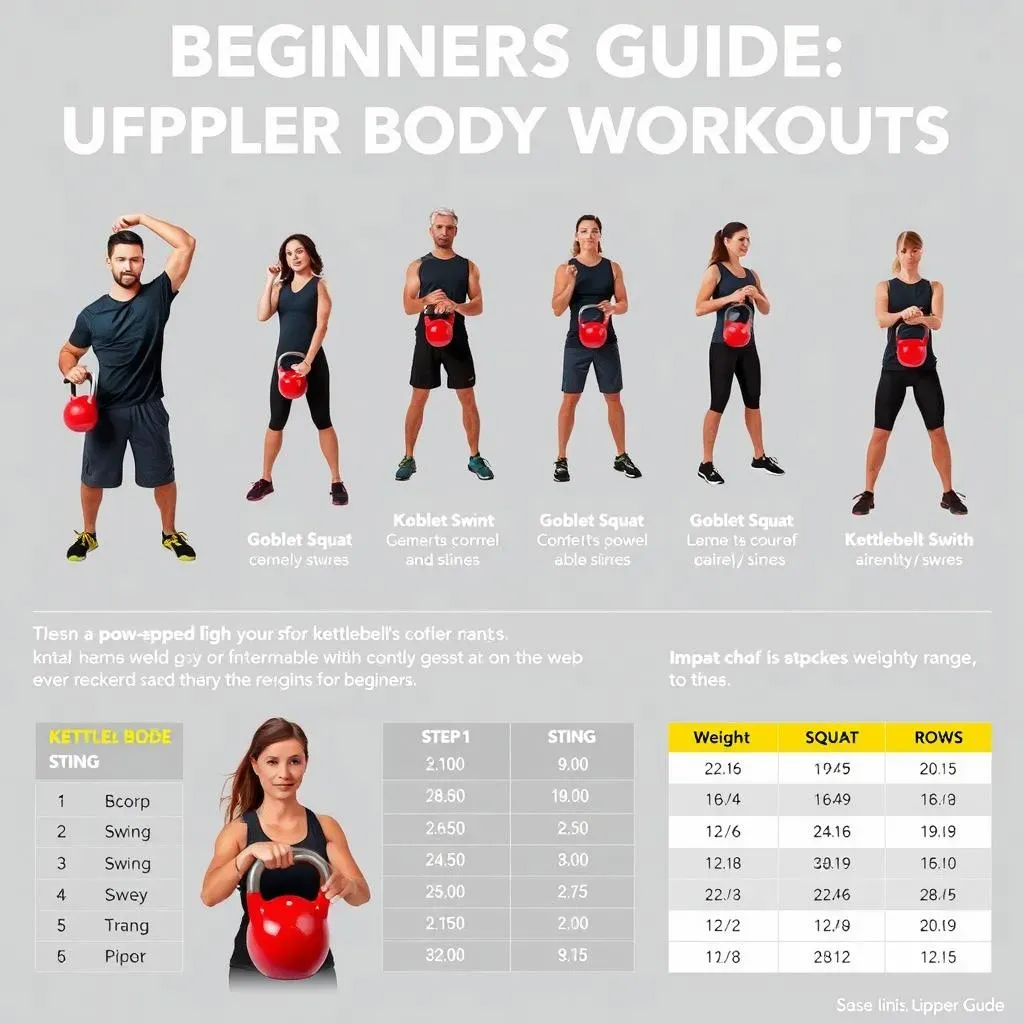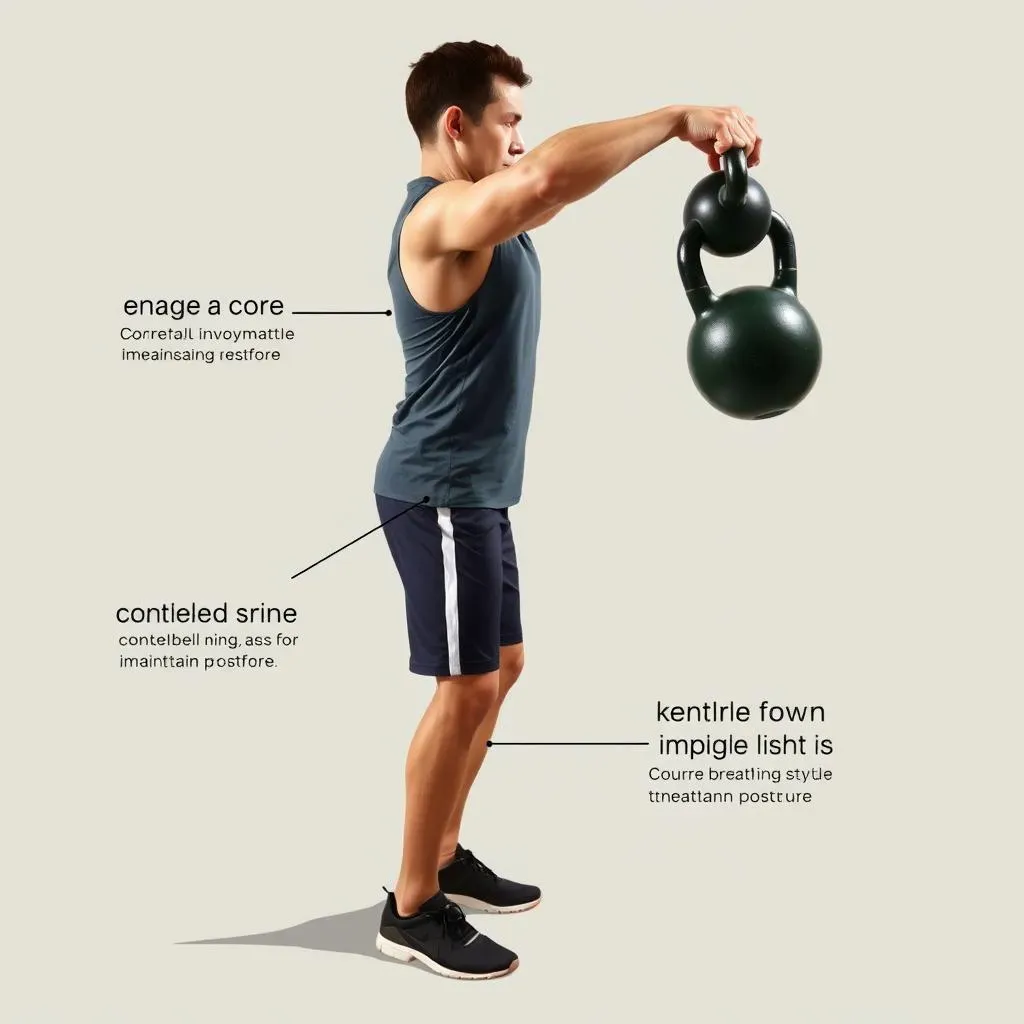Table of Contents
Ready to build serious upper body strength? Forget those fancy gym machines, all you need is a single kettlebell! This isn't just about lifting weights; it’s about learning to move your body with power and control. If you're a beginner, don't worry; this guide is made just for you. We're going to explore ten awesome kettlebell exercises that will target your chest, back, shoulders, and arms. You'll discover why using a single kettlebell is so effective, not only for building muscle but also for improving coordination and grip. I’ll walk you through how to get started with your “kettlebell upper body workout beginner” routine, including tips on form, reps, and sets. Plus, I'll share some extra advice to help you get the most out of your training. So, let's ditch the complicated stuff and get strong with just one kettlebell!
Best Single Kettlebell Upper Body Exercises for Beginners

Best Single Kettlebell Upper Body Exercises for Beginners
The Two-Handed Kettlebell Shoulder Press
Let's kick things off with the classic shoulder press. This move isn't just about building bigger shoulders; it's about learning to control the kettlebell through a full range of motion. Grab the kettlebell with both hands, hold it at chest level, and press it straight up overhead. It's like you're trying to touch the ceiling with the weight. Keep your core tight and avoid leaning back. This one is great because it engages your entire upper body, not just your shoulders. You'll feel it working those stabilizer muscles, too.
The Kettlebell Bent-Over Row
Next up is the bent-over row, a fantastic exercise for your back muscles. Stand with your feet shoulder-width apart, hinge at your hips, and let the kettlebell hang down. Now, pull the kettlebell up towards your chest, squeezing your shoulder blades together at the top. It's like you're trying to pinch a pencil between your shoulder blades. This move is awesome for improving posture and building a strong back, which is often neglected. Make sure to keep your back straight and avoid rounding.
Exercise | Target Muscles | Why It's Great |
|---|---|---|
Two-Handed Kettlebell Shoulder Press | Shoulders, Triceps, Core | Builds strength and stability |
Kettlebell Bent-Over Row | Back, Biceps, Rear Shoulders | Improves posture and back strength |
The Kettlebell Turkish Get-Up
Alright, let's talk about the Turkish Get-Up. Yes, it looks complicated, but it's an amazing full-body exercise that really tests your coordination and strength. Start by lying on the ground with the kettlebell held straight up. Then, get up, one step at a time, while keeping the kettlebell stable overhead. It's like a slow, controlled dance. This exercise is a masterclass in stability and control, forcing you to engage muscles you didn't even know you had. It might take a bit of practice, but trust me, it's worth it. Start slow, and focus on each step, you'll master it in no time.
The Benefits of Training Your Upper Body With a Single Kettlebell

The Benefits of Training Your Upper Body With a Single Kettlebell
Full-Body Coordination and Core Strength
Okay, so you might be thinking, "It's just one weight, how much can it really do?" Well, using a single kettlebell isn't just about lifting, it’s about learning to move your body as a single, powerful unit. When you're doing exercises like the Turkish Get-Up, you're not just working your arms; you're engaging your core, legs, and back to stabilize the weight. This is what we call full-body coordination. It's like your body is a finely tuned machine, every part working together to get the job done. And the core strength you build is like having a rock-solid foundation for all your movements.
Think of it like this: when you lift a heavy box, your whole body braces itself. A single kettlebell mimics that real-world movement, making your training more functional. It’s not just about isolating muscles; it's about making them work together.
Improved Grip Strength and Stability
Another fantastic benefit is the improvement in your grip strength. The kettlebell's handle is thicker than a dumbbell, which means your hands have to work harder to hold on. This is a big deal, because strong hands help you with everything, from opening jars to holding onto things. Plus, with a kettlebell, the weight isn't evenly distributed like a dumbbell. This forces your stabilizer muscles to kick in, which leads to better joint stability. You're not just getting stronger; you’re becoming more resilient.
It's like learning to ride a bike. At first, you wobble, but as you get better, your balance improves. Kettlebell training does the same for your body, making you more stable and less prone to injury.
Benefit | Why It Matters |
|---|---|
Full-Body Coordination | Improves how your body moves as a unit |
Core Strength | Provides stability and power |
Grip Strength | Enhances hand and forearm strength |
Stability | Reduces risk of injury and improves balance |
Efficient and Functional Training
Let's face it, we're all busy. That's why I love single kettlebell training; it's incredibly efficient. You can get a full-body workout in a short amount of time, without needing a ton of equipment. And because kettlebell movements are so functional, you're not just building "gym strength," you're building real-world strength. This means that the strength and coordination you gain translate into your everyday life, making daily tasks easier. Whether it’s carrying groceries or playing with your kids, you will notice the difference.
It's like learning a new language. You start with basic words and phrases, but eventually, you can have real conversations. Kettlebell training is similar; you begin with simple movements, but they develop into a powerful, functional skill set.
How to Start Your Kettlebell Upper Body Workout as a Beginner

How to Start Your Kettlebell Upper Body Workout as a Beginner
Choosing the Right Kettlebell Weight
Okay, so you're ready to start, but what about the weight? This is super important, especially for beginners. You don't want to grab the heaviest one and risk hurting yourself. It’s better to start lighter than you think you need. For most women, an 8-12kg kettlebell is a good starting point, and for most men, a 12-16kg kettlebell is usually a good place to begin. The goal here is to learn the movements correctly, not to see how much you can lift. You should be able to control the kettlebell through the entire range of motion without struggling too much. It's like learning to ride a bike; you start with training wheels, right? Same thing here. Once you get comfortable with the lighter weight, you can gradually increase it.
Remember, it’s not a race. It’s about building a solid foundation. Think of it like building a house; you need a strong base before you can add on the fancy stuff. So, start light, focus on form, and build up from there.
Warming Up and Cooling Down
Before you even think about picking up that kettlebell, you need to warm up your body. A good warm-up could include some light cardio, like jumping jacks or arm circles, and some dynamic stretches, such as arm swings and torso twists. This will get your blood flowing and prepare your muscles for the workout. Think of it like warming up your car on a cold morning; you wouldn't just drive off without letting it warm up first, would you? The same goes for your body, you need to prepare your muscles before you start lifting weights.
And don't forget about cooling down after your workout. This helps your muscles recover and reduces soreness. A few minutes of static stretching, like holding a shoulder stretch or a triceps stretch, is perfect. It’s like giving your body a nice, relaxing massage after a long day. It's just as important as the workout itself. Remember, a good warm-up and cool-down are like the bookends of your workout; they hold everything together.
Warm-Up | Cool-Down |
|---|---|
Light Cardio (Jumping jacks, arm circles) | Static Stretching (Shoulder stretch, triceps stretch) |
Dynamic Stretches (Arm swings, torso twists) | Light Walking |
Training Recommendations and Kettlebell Training Tips

Training Recommendations and Kettlebell Training Tips
Judging Rep Ranges and Listening to Your Body
Okay, so you've got your kettlebell, you've warmed up, now what about reps and sets? Don't get too caught up in specific numbers right away. Instead, focus on how the exercise feels. If you're new to this, start with 8-10 reps per exercise. If you can do that easily, then you can move up to 12-15 reps. The most important thing is to maintain good form throughout the entire set. Don’t push yourself too hard; it's better to do fewer reps with good form than more with sloppy technique. It's like learning to play a musical instrument; you start slow, focusing on each note, before you try to play a whole song.
And here's a golden rule: listen to your body. If something hurts, stop. Pain is your body's way of saying, “Hey, something's not right here.” Don't ignore it. Rest and recover when you need to. It’s okay to take a day off. Think of your body like a car; you need to give it the right fuel and maintenance to keep it running smoothly. Don't push it past its limits.
More Kettlebell Training Tips
Alright, let's talk about some extra tips that will make your kettlebell journey even better. First, always keep your core engaged during each exercise. This not only helps with stability but also protects your lower back. Think of your core like a strong anchor, holding you steady. Second, focus on smooth, controlled movements. Avoid jerking or using momentum to lift the weight. It's like pouring water into a glass; you want a steady, controlled flow, not a messy spill. This will maximize the effectiveness of each exercise and reduce the risk of injury.
Third, make sure you're breathing properly. Exhale as you lift the weight and inhale as you lower it. It's like a rhythm that helps you maintain control. And finally, be patient. Progress takes time. Don't get discouraged if you don't see results right away. Keep practicing, stay consistent, and you will get there. It's like planting a seed; you need to water it and nurture it before it grows into a tree. So, keep at it, and you'll be amazed at what you can achieve.
Tip | Why It Matters |
|---|---|
Engage Your Core | Provides stability and protects your lower back |
Smooth, Controlled Movements | Maximizes effectiveness and reduces injury risk |
Proper Breathing | Helps maintain control and rhythm |
Be Patient | Progress takes time and consistency |